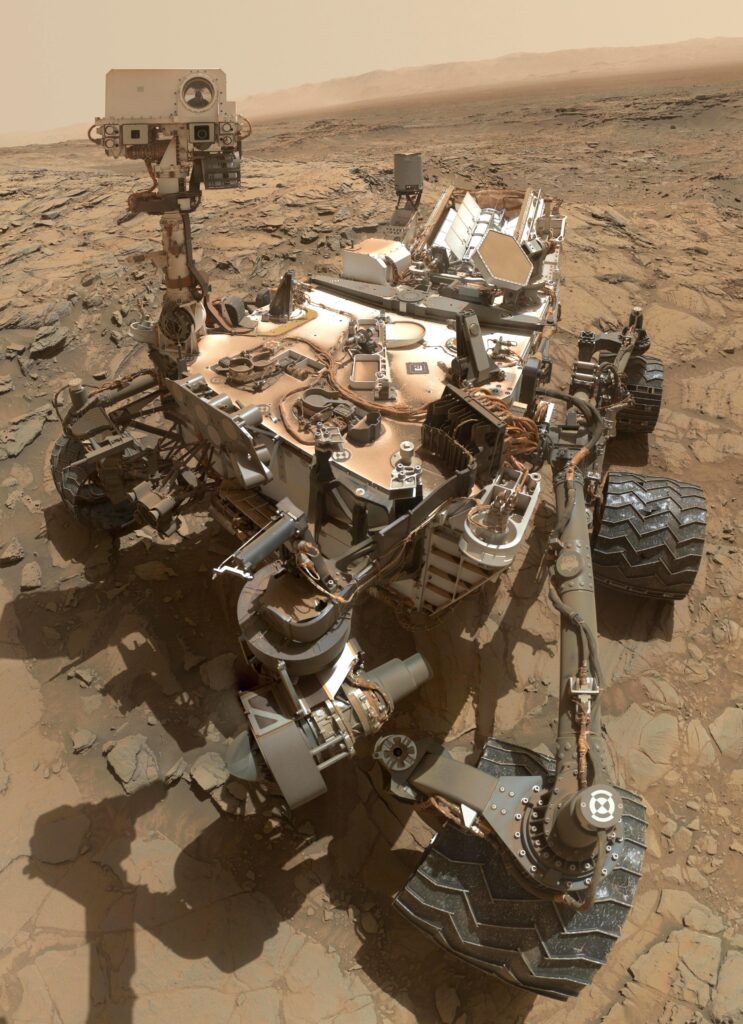NASA Rover Unveils Unusual ‘Skull’ Formation on Mars, Sparking Scientific Curiosity
In an astonishing revelation that has captivated the scientific community, NASA’s Perseverance rover has documented a peculiar rock formation on Mars that strikingly resembles a skull. This intriguing find, situated within the Jezero Crater, has prompted inquiries into the geological history of Mars and its potential to have once supported life. Researchers are currently engaged in detailed examinations of this remarkable structure, which appears conspicuously out of place in its environment. As discussions about its origins intensify, experts stress the necessity of maintaining a scientific viewpoint and encourage the public to consider natural erosion processes rather than fantastical explanations. The ongoing investigation into this Martian enigma could significantly enhance our understanding of the planet’s landscape and historical conditions conducive to life.
NASA Rover Reveals Strange Skull-Like Formation on Mars Stirring Scientific Discourse
A recent discovery by NASA’s rover on Martian terrain has left scientists pondering over an unusual structure that bears resemblance to a skull. Captured through high-resolution imaging technology, this formation showcases both notable similarities to earthly skulls and characteristics that challenge conventional geological interpretations. This unexpected finding is rapidly becoming a central topic in astrobiology and planetary science discussions.
Several theories have surfaced regarding the origin of this enigmatic structure, leading to vibrant debates among experts:
- Natural Erosion: Some researchers propose that the skull-like appearance may stem from natural erosion processes acting upon Martian rocks.
- Evidence of Ancient Life: Others speculate it could be remnants from an ancient civilization unknown to us.
- Visual Illusions: A faction believes that what we see is merely an optical illusion created by unique atmospheric conditions on Mars.
To gain clarity regarding this anomaly, astrophysicists are collaborating with geologists and paleoanthropologists for thorough analysis aimed at identifying any organic materials or significant geological activity associated with it. As debates continue, initial findings are being compiled into informative tables generating further interest within scientific circles:
| Characteristic | Description |
|---|---|
| Morphology | Bears resemblance to a skull with distinct eye-like indentations |
| Dimensions | Around 1.5 meters in length |
Exploring the Significance of This Discovery for Mars Research and Existence Beyond Earth
The recent identification of an unusual formation resembling a skull on Mars has ignited passionate discussions among scientists as well as space enthusiasts alike. This discovery not only challenges existing notions about Martian geology but also raises profound questions concerning its capacity for sustaining life forms in history. Experts suggest such findings might indicate favorable conditions for life existed much longer than previously assumed.
The skepticism surrounding whether this formation represents biological evidence does not diminish its significance; rather it invites renewed exploration into both Martian history and environmental evolution.
The implications extend beyond mere curiosity; they influence future missions aimed at exploring Mars more thoroughly for signs indicative of past biological activity:
- Pursuing similar formations across various regions on Mars;
- Diversifying sample return missions to include these anomalous structures;
- Evolving rover technologies capable of conducting comprehensive analyses for potential biosignatures;
This discussion surrounding the peculiar shape emphasizes critical moments in our quest for extraterrestrial life while challenging scientists’ methodologies regarding exploration strategies moving forward—opening up new avenues filled with inquiries about life’s existence beyond Earth.
Expert Advice on Analyzing Anomalies and Enhancing Mars Research Initiatives
The emergence of an unexplainable ‘skull’-like anomaly prompts experts to highlight enhancing analytical techniques crucial for comprehending such extraordinary discoveries better. Employing advanced imaging technologies alongside automated analysis tools can significantly assist researchers in categorizing anomalies while discerning their origins effectively through collaborative efforts across disciplines including planetary science, geology, astrophysics etc., fostering shared insights during investigations.
Recommended strategies include:
- Interdisciplinary Collaboration: Encourage cooperation between planetary scientists , geologists ,and astrophysicists sharing insights & methodologies related towards anomaly investigations .< / li >
- < strong >Centralized Data Sharing Platforms: strong >Create databases where researchers upload & access findings promoting transparency & collective learning .< / li >
- < strong >Machine Learning Utilization: strong >Leverage AI analyzing vast datasets from rover images identifying patterns human analysts might overlook .< / li >
- < strong >Field Testing Replications: strong >Conduct terrestrial experiments replicating Martian conditions providing context understanding formations anomalies .< / li > ul >
Additionally ,as explorations progress documenting all findings meticulously remains paramount supporting structured records detailing characteristics behaviors encountered anomalies.
A simple framework documenting data may encompass : p >Anomaly Title th > Location (Coordinates) < / th > Date Observed < / th > tr > < td Mysterious Shard This emphasis placed upon systematic anomaly analysis will not only fuel curiosity but also deepen our comprehension concerning both historical narratives surrounding mars along possibilities supporting existence therein.
As we unveil enigmatic formations like ‘the skull’, vigilance innovation must guide investigative approaches taken by scientific communities involved throughout these endeavors! p >Looking Ahead Towards Future Discoveries! h2 >< p>The recent unveiling involving peculiar ‘skull’-shaped structures discovered via NASA’s rovers continues captivating audiences worldwide sparking waves curiosity debate amongst planetary sciences communities alike! While initial reactions evoke thoughts ancient civilizations extraterrestrial intelligence caution against premature conclusions emphasizing rigorous analyses contextualizing geological formations present Red Planet ! As research progresses investigating implications stemming from these discoveries underscores ongoing quests knowledge pertaining towards broader questions relating existence beyond earth itself ! NASA’s relentless pursuit exploring mars pushes boundaries understanding reminding us mysteries await just outside reach! Stay tuned following developments awaiting further insights emerging ongoing missions promising reveal even more secrets celestial neighbors ahead! p
